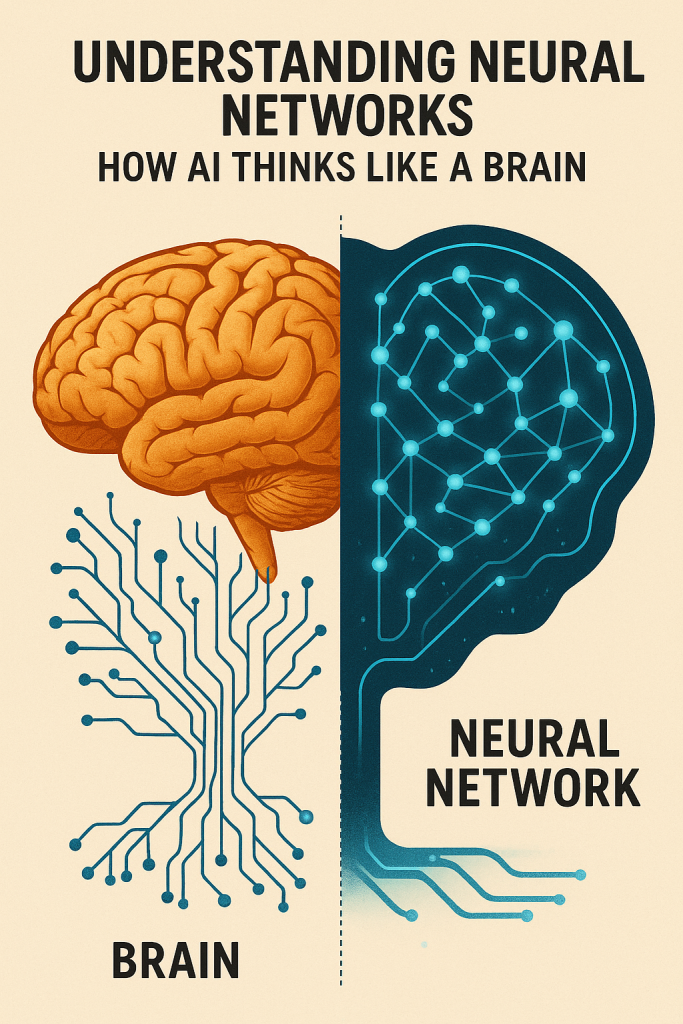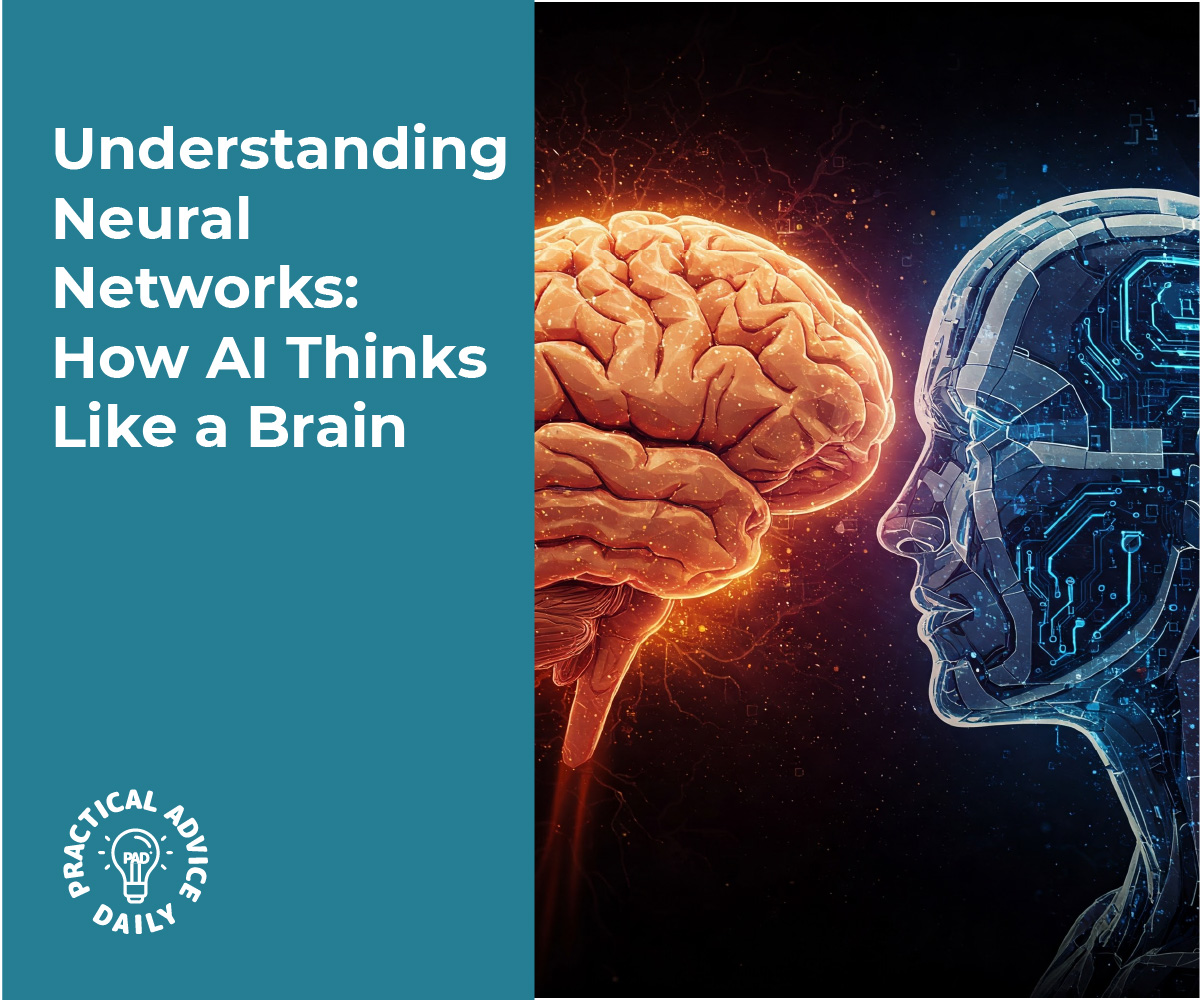If you’ve ever wondered how artificial intelligence (AI) can recognize your voice, suggest TV shows, or even chat with you online—neural networks are a big part of the answer.
We know the term can sound intimidating, but don’t worry—we’ll walk through it step-by-step using everyday examples. This guide is designed for anyone who’s curious but doesn’t want a tech headache. Let’s explore how AI “thinks” in a way that’s inspired by the human brain.
Table of Contents
🔍 Key Takeaways
- Neural networks are a type of AI that mimic how the human brain works.
- They learn by spotting patterns—just like we do.
- You don’t need to be tech-savvy to understand the basics.
- Think of it like a recipe: simple steps that add up to something smart.
- Real-life examples (like recognizing faces or spam emails) make it easy to grasp.
What Is a Neural Network?
Let’s start with a simple idea:
A neural network is a computer system that tries to learn and make decisions like a human brain.
Imagine your brain is made up of tiny helpers (called neurons). Each one passes little messages to the next, helping you make sense of the world. For example, when you see a dog, your brain quickly puts together clues: the shape of the ears, the wagging tail, the bark. All those clues help you say, “That’s a dog!”
A neural network works in a similar way. It’s made up of “digital neurons” that work together to figure things out.

How It Works (In Everyday Terms)
Think of a neural network like a group of friends solving a mystery:
- One friend notices something odd — “This email looks strange.”
- Another friend checks the spelling — “Lots of typos here.”
- Someone else says — “It asks for a password right away. Suspicious!”
Together, they decide: “This might be a scam.”
That’s how a neural network works—each part looks at one small clue, then they work together to reach a conclusion.
Real-Life Examples You’ll Recognize
Neural networks are already part of your everyday life—even if you didn’t realize it:
- Voice assistants like Siri or Alexa understand your questions.
- Email services spot spam and keep your inbox clean.
- Streaming apps suggest movies you might enjoy.
- Photo apps help you group pictures of the same person.
In each case, the neural network has “learned” from lots of examples. Just like a child learns that four-legged animals are often dogs, the AI learns by practice and pattern.
A Simple Analogy: Teaching a Child
Let’s say you’re teaching your grandchild how to tell an apple from a tomato.
At first, they get it wrong—they might say, “They’re both red and round!”
But over time, they start to notice:
- Apples are sweeter
- Tomatoes are softer
- Apples are usually in lunchboxes, not salads
Little by little, they learn the difference. Neural networks do the same. They learn from examples and slowly get better at making decisions.
Final Thoughts
Neural networks may sound like high-tech wizardry, but at heart, they’re just clever systems that learn like we do—by seeing, practicing, and improving.
Now that you’ve peeked behind the curtain, you can feel more confident about the “brains” behind AI. And if you’re curious to dive deeper, there are many simple guides out there to help you explore more.
Want to learn how AI picks what you see on Facebook or Netflix? That could be the next step!
